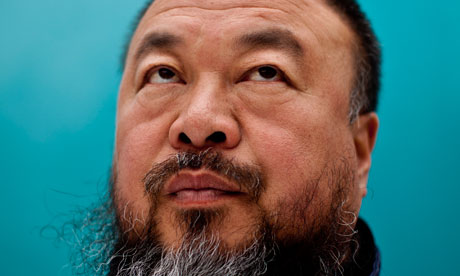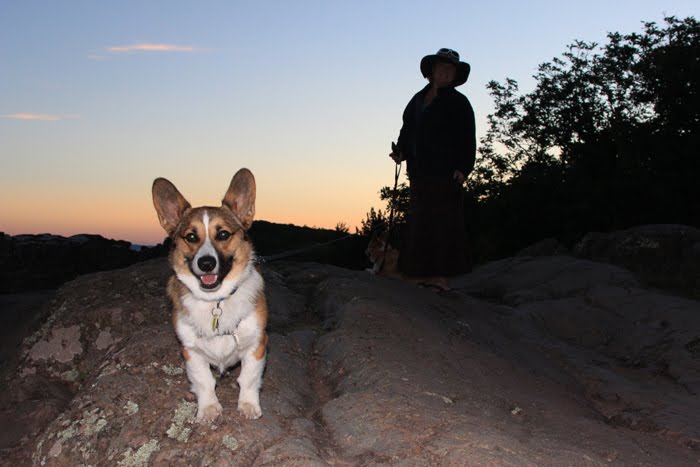
The installation will be on display in Central Park from May 2nd- July 15th
The original 18th century piece was created by two European Jesuits at the request of Manchu Emperor Qianlong and portrays the animals of the Chinese Zodiac each spouting water for two-hour intervals from their mouth. In 1860 Yuanming Yuan was pillaged by French and British troops during the Second Opium War and the heads were plundered. Today seven heads have been found including the rat, ox, tiger, rabbit, horse, monkey, and boar. The location of the other five heads is unknown. (It should be recalled that the rat and the rabbit were offered at a sale of Yves Saint Laurent Collection at Christie’s in February 2009 and were purchased for $19 million by Cai Mingchao, an advisor to China’s National Treasures Fund who then refused to pay.)
Ai Weiwei has re-interpreted the 18th century works on an oversize scale addressing issues of repatriation and the looting of ancient artifacts. “My work is always dealing with real or fake, authenticity and value and how value relates to current political and social understandings and misunderstandings. However, because Circle of Animals/Zodiac Heads is composed of animal heads, it’s a work that everyone can understand, including children and people who are not in the art world. I think it’s more important to show your work to the public. That’s what I really care about,” said Ai Weiwei in a recent statement.
His 12 heads are cast in bronze and placed on bronze bases each weighing approximately 800 pounds with measurements of 4 feet high and 3 feet wide. They stand at 10 feet high when the base and the head are brought together exerting a monumental presence for the gateway to Central Park. “It’s a busy area, so it can be seen by ordinary people, but also it’s not exactly an art center. I like that people can notice it and at the same time, not to bother them too much,” said the artist of the new location in recent interview with the NY Times.
Animal Circle/ Zodiac Heads are presented by the Chinese Contemporary Art Organization AW in cooperation with the City of New York. They were previously displayed at the 29th Sao Paulo Biennale in Brazil this past September. “It is innovative and thought-provoking exhibits like Circle of Animals/Zodiac Heads that keep New York one of the world’s great places to live, work and visit,” said Mayor Michael R. Bloomberg in a recent interview. After its New York City exhibition the works will travel to London’s Somerset House, Los Angeles’ LACMA, Houston’s Hermann Park, Pittsburg’s Warhol Museum, and Washington D.C.’s Hirshhorn Museum and Sculpture Garden.
Related Links:
Ai Weiwei Unleashes Animals of the Zodiac on Central Park for His First Public Art Project [Artinfo]
Plaza Hotel Fountain to be Home for Ai Weiwei Sculpture [NYTimes ]
Ai Weiwei’s Zodiac Heads/Circle of Animals at the Sao Paulo Biennale [Artdaily]
Plaza Hotel Fountain to Be Home for Ai Weiwei Sculpture [Forbes]
Mayor Bloomberg Announces Acclaimed Contemporary Chinese Artist Ai Weiwei Exhibits Circle of Animals/Zodiac Heads at Central Park’s Grand Army Plaza to Launch Historic Global Outdoor Public Sculpture Tour [NYC Gov]
[NY Times ]
 The twelve Zodiac Heads/Circle of Animals by Ai Weiwei are cast in bronze and positioned on circular bronze bases.
The twelve Zodiac Heads/Circle of Animals by Ai Weiwei are cast in bronze and positioned on circular bronze bases.
ARTnews
this link brings you to Crossing the Line in China by Barbara Pollack
Nicholas Logsdail, director of the Lisson Gallery, talks about a forthcoming exhibition of the artist's work and his growing influence on the global stage.
The Observer,

My last conversation with Ai Weiwei took place in January. My colleague Greg Hilty and I went to Beijing for three days to make selections for the forthcoming show at the Lisson Gallery, and we got a sense of great foreboding from him. He had been placed under house arrest in November and had subsequently been released, but he was already worried about whether he'd get out of the country. He had all these commitments abroad – in Berlin, in New York, and with us in London – and he was very concerned about fulfilling them.
There was a discussion then about whether we should do the show now or delay it for a year so that he could produce an entirely new body of work. We decided to go ahead because there was an urgency to it, due to his situation at home, and we wanted to give a London audience a sense of the range of his work and the thinking behind it.
In my opinion, Ai Weiwei is one of the major artists of the early 21st century. My gallery avoided the gold rush for Chinese art in the boom years because, in my experience, it's almost always a false premise to group artists together by generation or nationality. What's important is the quality of the individual artist, and it was clear to us that Ai Weiwei stood apart. He's not just the most important Chinese artist of his generation but a truly international figure.
His work is a very interesting blend of traditionalism and liberalism, with a revolutionary bent. He has an outspoken nature, which is what has got him into trouble, but my reading is that his primary impulse is less to overturn society than to improve it. He is unwilling to keep quiet in the face of ignorance and prejudice and he speaks out against injustice wherever he finds it.
I've met him on a number of occasions over the last couple of years. When we were preparing for the show, I found him to be highly practical and thoroughly professional. He is a serious man of few words but he has an ironic sense of humour. He's also a big guy, physically, with a barrel chest and a commanding presence. We had some very interesting conversations about the time he spent living in New York in considerable hardship. He was an exile, partly by choice, partly out of necessity because of his family's political problems in China. It was a gestation period, a time of growth. He was taking stock of the bigger world and putting his house in order, as an artist and an intellectual.
He may not think of himself as an intellectual, but I would certainly describe him as one. Although he can be irrational himself, he despises irrationality and tries to give a clear and logical approach to the issues that are important to him. He's committed and idealistic, and unaccepting of injustice to the point of self-denial – allowing himself to get into this position is surely a form of self-denial.
All the arrangements for the show had been made before his arrest, but it feels rotten putting it on in his absence. We've been praying, metaphorically speaking, that some news of his whereabouts would break, but nothing has: it's been total silence since his detention.
The outpouring of respect and admiration for him, his honesty, his bravery – maybe you could say his foolhardiness as well – have been completely astonishing. Many other artists have shown their solidarity, including Anish Kapoor who has dedicated his forthcoming Grand Palais show in Paris to Ai Weiwei. The best we can do now is to maintain our support for him and keep up the pressure. It's crucial that all the planned projects go ahead – his work is also showing in New York and, from next week, at Somerset House in London.
How do we put ourselves into the heads of the Chinese authorities who are responsible for his arrest? How do we reach them? What is it that we need to say to them? In arresting Ai Weiwei, I believe they have failed to understand what it means to be an artist. They have failed to be culturally aware. He is exactly the kind of person they should have onside. He's actually much more dangerous now, under arrest, than he ever was before. I think he is a great global cultural ambassador for the new China, but this arrest is making China's new cultural revolution look rather unrevolutionary.
They have accused him of tax evasion, bigamy and spreading pornography on the internet, but these charges are clearly trumped up. If you want to nail somebody and put them away for a while, you can probably find dirt on anybody on the planet, let alone a controversial artist like Ai Weiwei. Some people have commented that the Chinese government saw what was going on in north Africa and the Middle East and got nervous. That may well explain his arrest.
I am hopeful though – that he's in a reasonable state and can speak for himself; he's an intelligent man and should be able to provide arguments for his release. Although of course it's not going to get you anywhere if you're talking to a brick wall. What's so distressing about this situation is that there is no obvious authority that one can appeal to or challenge about what has happened.
It's so sad that this charismatic, larger-than-life, gentle guy has been arrested. I'm deeply upset. I'd get on the next plane to China if I thought there was anything I could do, and I'm sure loads of people feel the same way.
We have organised a very different series of events from the ones we had originally planned. Alongside the show, we will have a press conference and then a big open party to celebrate Ai Weiwei's work. We will also have a moment of silence to remember his situation, although until he is released I don't think it is going to be far from anyone's mind.











